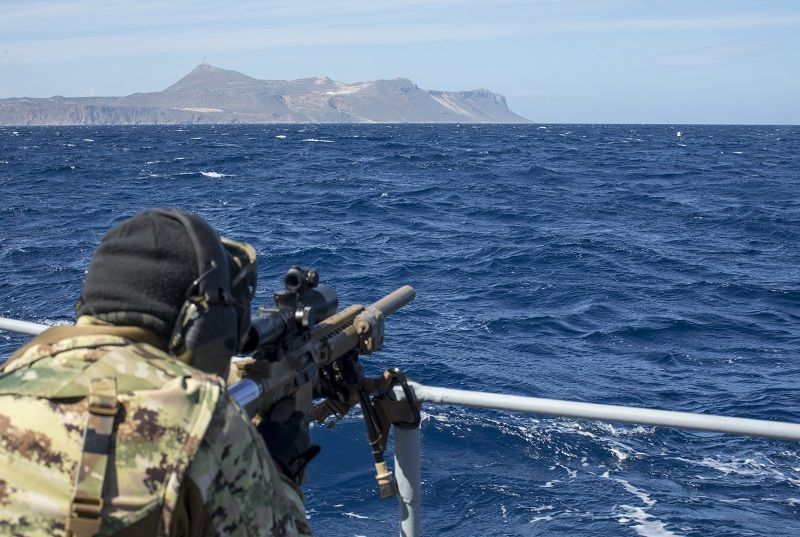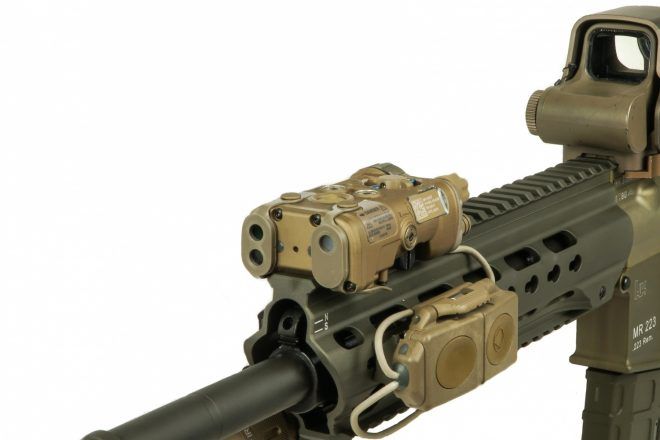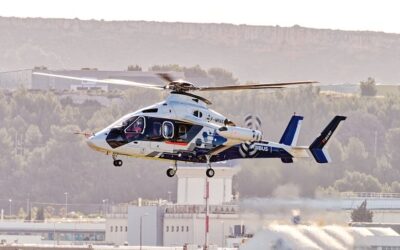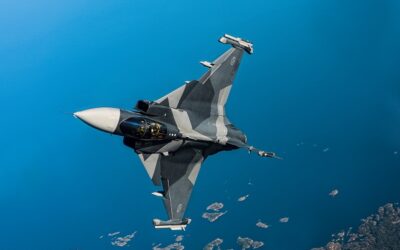Marksmanship Principles and Precision in Detail
Precision is the watchword for snipers and marksmen with a number of products entering the marketplace that can sharpen their aim still further.
Security forces are paying close attention to developments in precision marksmanship to increase operational effectiveness and reduce collateral damage. Requirements arise from the proliferation of increasingly complex operating environments where soldiers and law enforcement personnel must be capable of engaging enemy targets, sometimes in densely populated areas where combatants can easily blend into local populations. Furthermore, following decades of controversial US-led interventions in Afghanistan and Iraq, the public appetite for unnecessary collateral damage to local populations and infrastructure is low with armies placing an increased emphasis on precision and rules of engagement in order to negate such a trend.
Marksmanship Principles
Marksmanship remains reliant upon a variety of skills and capabilities ranging from the ergonomics of the weapon to allow for the use of the most efficient firing positions, through to the integration of sights and suppressor technology. Additionally, the market continues to witness improvements regarding enhanced ammunition in order to rebalance the ballistic properties of a round after it has been fired. This includes the consideration of environmental effects which can play a significant role in ammunition accuracy and effectiveness. As an example, sources described to MONCh how any consideration of advanced precision in any type of environment, particularly at long ranges, must include an understanding of trajectory, ballistic coefficients (the measure of a body’s ability to overcome air resistance in flight), wind, twist rate (the distance a barrel’s rifling takes to complete one full revolution), spin drift (the drift which a bullet’s spin causes) and transonic effects (the behaviour of near-supersonic speeds upon the ammunition).
More conventional solutions for sniper teams have comprised the fielding of magnified scopes with an ability to be networked to separate fire control systems. Such a trend was illustrated by a recent procurement by the Portuguese Army’s Special Operations Forces in March 2018 which selected Schmidt & Bender’s PM-II 3-27×56 High Power Digital BT scope. Bought to enhance the effectiveness of a variety of sniper rifles and designated marksman rifles including the Heckler & Koch HK-417, Barrett Firearms Manufacturing M-107A1 and Accuracy International’s AXMC; the PM-II has been designed to allow integration with external technologies to support sniper operations including laser rangefinders and ballistic calculators. However, the security market is now following the special operations in generating demand for fully integrated and next-generation technologies designed to further optimise the precision and range of sniper teams in contemporary and future environments.
Demand for these requirements were clearly outlined at the US Army Special Operations Command International Sniper Competition, conducted at Fort Bragg 18-22 March 2018. Featuring the participation of US and international SOF units, the annual event tested sniper pairs in ‘range, speed and accuracy’ of fire missions, with a series of ‘real world missions’ designed to replicate the stresses associated with current operations. According to a course official from the US Army John F Kennedy Special Warfare Centre and School who wished to remain anonymous, participants were assessed in their ability to hold “durable and steady” fire positions to effectively engage targets. Nevertheless, the source noted that: “When guys get put on the clock they go faster. There’s more pressure (so) they rush it and then they start missing.”
Exercises included a scenario featuring a total of 20 targets mixed between obstacles, buildings and vehicles, with instructions including requirements to engage different targets with handguns, carbines or sniper rifles. Outlining to MONCh the importance of building up stable fire positions for increased precision, the instructor concluded: “The successful teams are the ones that are slowing down and identifying the target. This forces teams to work together.”
Speaking to MONCh at the Future Soldier Technology event in London on 13 March 2018, the US Army’s Deputy Director for Lethality, Daryl Easlick, described how the service was considering multiple avenues to enhance the precision of personnel particularly in sniper operations: “All our sniper rifles now have suppressors for visual and acoustic suppression,” highlighting how all army requests for information from henceforth would now include suppression technology in order to increase levels of command and control and situation awareness during engagements.
Also referring to current operational requirements, Mr Easlick described how the army was seeking to achieve the overmatch of, “near peer target sets,” in terms of precision and lethality with the integration of laser rangefinders and ballistic calculators to assist the acquisition of weapon sights.
Other key themes arising from the event saw NATO and allied forces describing how Counter-Terrorism (CT) elements were also benefiting from the integration of Artificial Intelligence (AI) and Augmented Reality (AR) technology into fire control systems, allowing for the more, “precise application of lethal force,” as one NATO source explained to MONCh. Additionally, the introduction of mid-wave IR sensor technology into fire control systems has, “reduced engagement times in low and zero light conditions by 50%,” sources added while also promoting the proliferation of fused optical weapon sights (featuring both image intensified and infrared technology): “What technology do snipers need to match doctrinal requirement for a first round hit at anywhere between 900m and 1,500m in low light and zero light conditions,” one UK security source asked.

Next Generation
One of the most innovative and controversial technologies currently being assessed in the defence and security market is SmartShooter’s SMASH optical weapon sight which has been designed to, “ensure every first round hits its target, day or night,” according to company literature.
Designed to assist the marksmanship of operators engaging both static and moving targets, the SMASH sight has been realised in response to emerging calls from security organisations and governments to reduce collateral damage associated with CT and counter-insurgency operations in particular. Describing how the sight shortens ‘time-to-hit’ associated with the targeting cycle, a company official explained to MONCh how the SMASH could be integrated onto any carbine, rifle, marksman rifle or sniper system featuring a Picatinny-style rail adaptor. Available products include the SMASH-2000 which, according to a company official at the Israeli company, has been designed to, “give soldiers and law enforcement officials a precision edge in any given firefight.”
Speaking to MONCh, a senior official in the IDF described how tests conducted over the past three years had already witnessed the integration of SMASH on board the 5.56mm x 45mm Israel Weapons Industries’ (IWI) Micro TAVOR carbine as a small-sized fire control system capable of engaging moving targets with a high first round hit probability while under stress.
According to the IDF security official, Israeli agencies testing the solution have claimed how the SMASH weapon sight provides operators with ‘four times’ the capability of legacy weapon sights (including magnified and red dot weapon sights) especially when used to engage moving targets. The IDF, the source confirmed, is preparing to deploy ‘hundreds of units’ into the armed forces as part of an operational evaluation which, if successful, could lead to further approval for the procurement of thousands of systems. The technology could also be relied upon for other CT units across the IDF and other government agencies, they added: “We have also talked about networking a series of SMASH FCSs (Fire Control Systems) to one another on the battlefield to assist in the target acquisition of teams, but we are not there yet.”
In the US, government agencies continue to push industry partners to develop precision solutions aimed at enhancing the operational effectiveness of weapons and users. Examples include USSOCOM’s consideration of a Precision Variable Power Scope/Precision Aiming Laser device to support the long range engagement of sniper teams, which was awarded to L3 Technologies. The US DoD confirmed the U$48 million contract for a Squad Aiming Laser on 21 September. L3 Technologies is a major defence contractor with numerous branches, the winning Squad Aiming Laser submission came from L3 Insight Technology, based in Londonderry, NH, and beat out four others.

USSOCOM is seeking to equip operators with a more automated means of engaging targets out to a maximum range of 1,600m in line with the effective ranges of currently-available .338-calibre sniper systems.
Meanwhile, the US Combating Terrorism Technical Support Office (CTTSO) has awarded Applied Ballistics a $1.3million contract to consider next-generation precision marksmanship requirements as part of the first phase of its Extreme Sniper Strike Operations (ESSO) programme. According to company founder, Bryan Litz, the first phase of the ESSO effort aims to identify, “predictive capabilities,” of pulse Doppler radar measurements in live fire test programmes to identify long range ballistic capabilities of legacy sniper ammunition fired at Extreme Long Ranges (ELR). “Phase 1 will conclude with ballistic modelling enhancements being integrated into the existing Applied Ballistics ecosystem of electronic devices which are currently deployed by numerous US and allied armed forces around the world,” Mr Litz confirmed while describing how the first phase would be completed by the end of 2018.
Applied Ballistics is currently involved in developing software, applications and other technology upgrades to support a wide inventory of fire control systems and target acquisition devices including the US Defence Advanced Research Project Agency’s (DARPA) Computational Weapon Optic; Kopin Corporation’s Precision Acquisition and Targeting System; L-3 Insight’s STORM; and Wilcox Industries’ RAPTAR solutions. A follow-on second phase of the ESSO is set to focus on the development and evaluation of an, “advanced ELR sniper solution,” aimed at increasing the first round hit capabilities of sniper teams seeking to engage man-sized targets, officials close to the programme added: “The Applied Ballistics Weapons Division is currently conducting research and development on weapons platforms, as well as new cartridge and bullet options, that will maximise ELR ballistic performance from lightweight, practical, magazine fed systems.”
Mr Litz added: “This means extending the maximum effective range and achieving decisive overmatch on the battlefield.”
Training
Alongside optical technology, training is as vital as equipment to ensuring that the marksman or sniper’s round hits its desired point of impact. Meggitt Training Systems (for what Meggitt will bring to this year’s SHOT Show, please see here) provides a number of dedicated solutions in this regard via its Firearms Training Systems, better known by their FATS acronym. These products have won customers in the US military and law enforcement communities, with three distinct products, the FATS-100P, FATS-100LE and FATS-300LE available.
The FATS-100LE has incorporated technology developed for systems delivered to the US Marine Corps into a training aid specifically aimed at the law enforcement market, the company told S&SI. Its notable features include three-dimensional marksmanship training plus a wireless tablet-based control system which incorporates an intuitive user interface. A larger system, in the form of the FATS-300LE is also available to law enforcement professionals which includes five free-standing flat screens which can be arranged in a hexagonal format.
Whether called upon to satisfy operational requirements in urban, suburban, rural or subterranean environments, demand for increased precision for marksmen and sniper teams looks likely to continue given domestic and international security challenges around the world. However, no matter how mature the technology available to military and law enforcement special operations teams, this must be combined with mature field- and tradecraft tactics, techniques and procedures allowing users to manoeuvre themselves into positions where they can take the shot in the first place. Only when these two critical requirements merge, will the market witnessing the full potential of next-generation precision in the small arms arena.
Andrew White
























